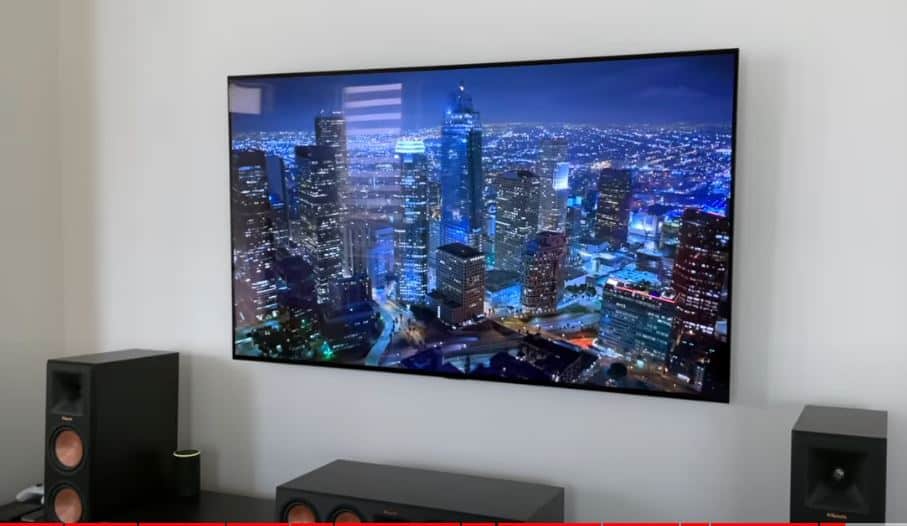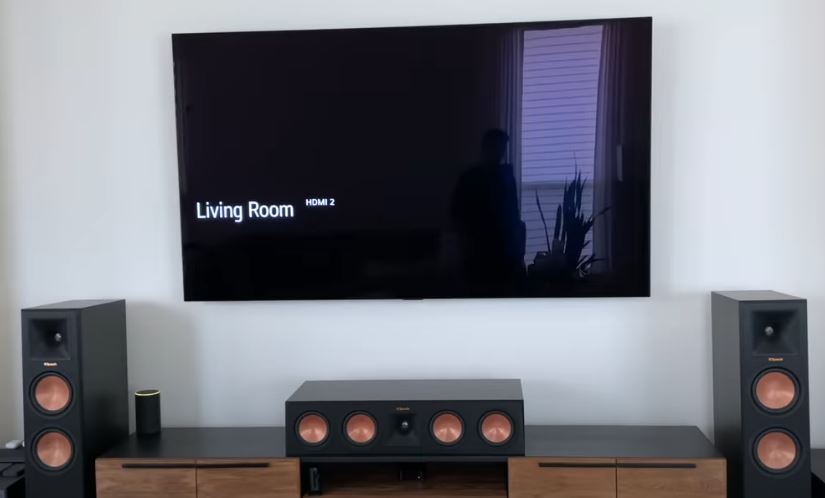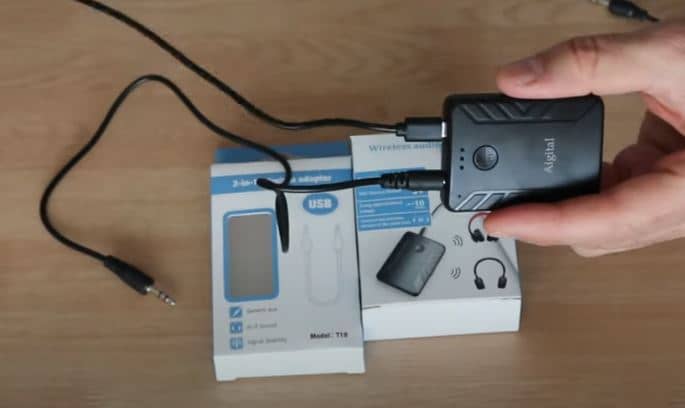Today, we will discuss our topic “Can Bluetooth speakers connect to TV and how to use it?”. In recent years, there have been a lot of questions about whether or not Bluetooth speakers can connect to televisions.

There have been more and more devices that allow users to connect wirelessly to other devices. Whether you are at home or on the go, you may find yourself wanting to connect your Bluetooth speakers to your TV.
In this article, we will answer these questions and more.
Also, read a detailed guide on how to connect Bluetooth Soundbar to Roku TV.
Can Bluetooth Speakers Connect To TV?

Bluetooth speakers are a great option for use in small spaces, such as apartments, condos, or homes. They can be placed anywhere in the room and still provide excellent sound quality.
But the question arises is, whether can Bluetooth speakers connect to TVs or not? The answer is yes. In this article, I will show you how to connect your Bluetooth speaker to your TV.
There are a few things to keep in mind when connecting Bluetooth speakers to a television.
First, make sure that the Bluetooth connection is enabled on both devices. Second, make sure that the television has an audio output port and that the speaker is compatible with that port.
Third, make sure that the audio setting on the television is set to output audio via Bluetooth.
Fourth, ensure that the volume on both devices is turned up sufficiently so that you can hear what is being played from the speaker.
Finally, once everything is connected and configured correctly, simply start playing music from the speaker and watch TV without having to switch between screens!
Can I Use My Roku TV To Connect To My Bluetooth Speakers?
If you have a Roku TV, you can connect it to your Bluetooth speakers to get audio playback. This is possible because the Roku TV has its own built-in speaker system.
To do this, first, make sure that your Bluetooth speakers are connected to your phone or another device. Then, connect the Roku TV to the same network as the speakers.
Once connected, open up the Roku TV’s menu and select “Audio & Video.” Under “Audio Output,” choose “Bluetooth.” You’ll now be able to select which source you want to use for audio playback – your Bluetooth speakers or the built-in speaker on the Roku TV.
Yes, you can connect your Roku TV to your Bluetooth speakers.
Can I Connect My Apple Tv To My Bluetooth Speakers?
When it comes to connecting your Apple TV to your Bluetooth speakers, the answer is generally yes. If you have a Bluetooth connection between your Apple TV and your speaker, you can usually connect them without any problem.
However, there are a few caveats. First of all, if you have an older model Apple TV or if your speaker doesn’t support Bluetooth 4.0 or higher, then you won’t be able to connect them directly. In these cases, you’ll need to use an external adapter or receiver to connect the two devices.
Secondly, not all Bluetooth speakers are compatible with the Apple TV. If yours isn’t listed on the product page or online guide as compatible, then it likely isn’t. In that case, you may need to find another speaker that is compatible with the device for them to work together. Or use the method I show you in the next few lines.
Can I Hook Up Multiple Bluetooth Speakers To My TV?
Bluetooth speakers are a great way to add some extra audio quality to your television viewing experience. You can hook up multiple Bluetooth speakers to your TV, giving you the ability to listen to the same song or movie from multiple locations. However, there are some limitations to this functionality.
For example, if you want to use two Bluetooth speakers simultaneously, each one must be connected directly to your TV. Additionally, if you want to use a Bluetooth speaker with your TV wirelessly, make sure that it is compatible with the specific model of television that you have.
How to Connect Bluetooth Speakers to TV?

After you now know the answer to this question ” Can Bluetooth speakers connect to TV? Do you want to connect Bluetooth speakers to your television, there are a few things to keep in mind.
- Make sure that the Bluetooth speakers and TV are both compatible with the same type of connection.
- Make sure that the Bluetooth connection is set up correctly.
- Make sure that your TV has an audio output port available.
- Ensure that your Bluetooth speaker is turned on and connected to the same network as your TV.
- Choose a listening spot near your TV so you can hear the sound quality properly.
- Use the volume controls on your Bluetooth speaker to adjust the playback volume accordingly.
How to Connect Bluetooth Speakers to non-Bluetooth-Compatible TV?

If you want to use Bluetooth speakers with a TV that does not have Bluetooth capability, there are a few things you can do.
Many TVs have a built-in Bluetooth receiver, but there are also some older TVs that do not have a Bluetooth receiver and require an external 5V adapter to connect to Bluetooth speakers.
If your TV does not have a built-in Bluetooth receiver, you will need to find a 5V adapter or purchase a separate Bluetooth receiver. Once the TV and the speaker are connected, you can use the TV’s audio output to connect the speaker to your audio system.
Conclusion
Bluetooth speakers can connect to the TV in a variety of ways. Make sure to check which TV you have and which Bluetooth speaker you would like to use before connecting.
You can connect your Bluetooth speakers to your tv at home, on the go, or even use a separate device. Moreover, you must know the limitations and compatibility of your Bluetooth speaker and TV that you have to connect.
Does my Samsung tv have Bluetooth?
To check if your TV supports Bluetooth, In the TV’s Settings, select Sound, and then Sound Output. If your TV displays the Bluetooth Speaker List option, it supports Bluetooth. In case it does not match your TV and you are still unsure, consult your user manual.
